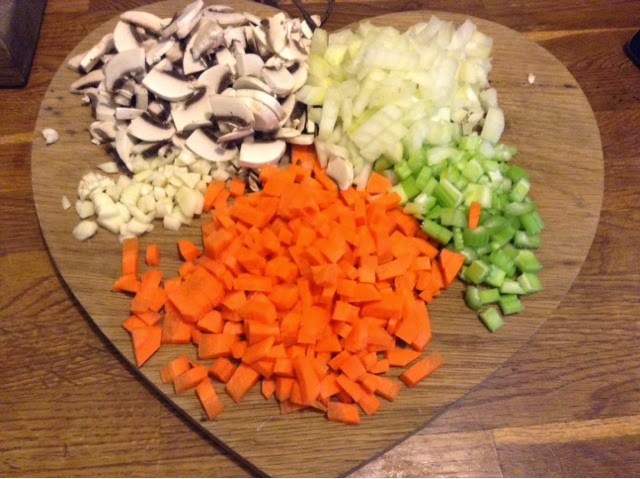Bibambap is officially my new favourite meal. It's a popular Korean dish and basically translates to "mixed vegetables with rice and meat". It's packed full of goodness and is tasty too. Be careful though- it's addictive!
Ingredients (Serves 2, generously)
2 medium carrots, julienned
1 red onion, sliced thinly
150g mushrooms, sliced
1 large courgette, julienned
200g beansprouts
200g short grain rice (I used arborio rice! which worked well)
2 large eggs
300g beef sirloin, sliced as thinly as possible
100ml bulgogi marinade
Sesame oil, to fry
Salt and Pepper
For the sauce
4 tbsp gochulang (a Korean chilli paste, available at Oriental supermarkets)
2 tbsp sesame oil
2 tbsp vinegar (I used cider vinegar, but any one will do)
1 tbsp sesame seeds
p.s, if you have difficulty finding the gochulang, just buy a hot chilli sauce and use this instead of making your own. I did this the first time and it still tasted great.
Method
1. Marinade your beef for as long as you possibly can. Place it in a bowl with the bulgogi marinade and massage it in with your hands until it is evenly coated. Cover with cling film and leave in the fridge for at least 30 mins.
2.Preheat the oven to 160 degrees and have two large serving bowls nearby. Heat a few tablespoons of the sesame oil in a frying pan and start cooking your vegetables separately. They should only take a few minutes each. After cooking each batch of vegetables, divide them up between the two bowls and place in the oven to keep warm whilst you cook the others.
3. Cook your rice by placing it in saucepan and adding 700ml of water. When the water has evaporated take the pan off the heat and place a lid on it, leaving it for at least 15 minutes to make sure the rice is nice and fluffy.
4. Make the sauce by combining all the ingredients in a bowl. Keep it at room temperature.
5. Add more sesame oil to your pan and fry the beef. It should be rare and tender so should only take a few minutes. Take the bowls out of the oven, and add the rice and the beef.
6. Fry the eggs until soft- try not to let the yolks harden too much. Season with salt and pepper if you wish. Place the eggs in the bowl.
When eating, mix the Bibambap thoroughly with a spoon, enabling the egg to coat the rest of the ingredients. Add the sauce generously and enjoy.
















































